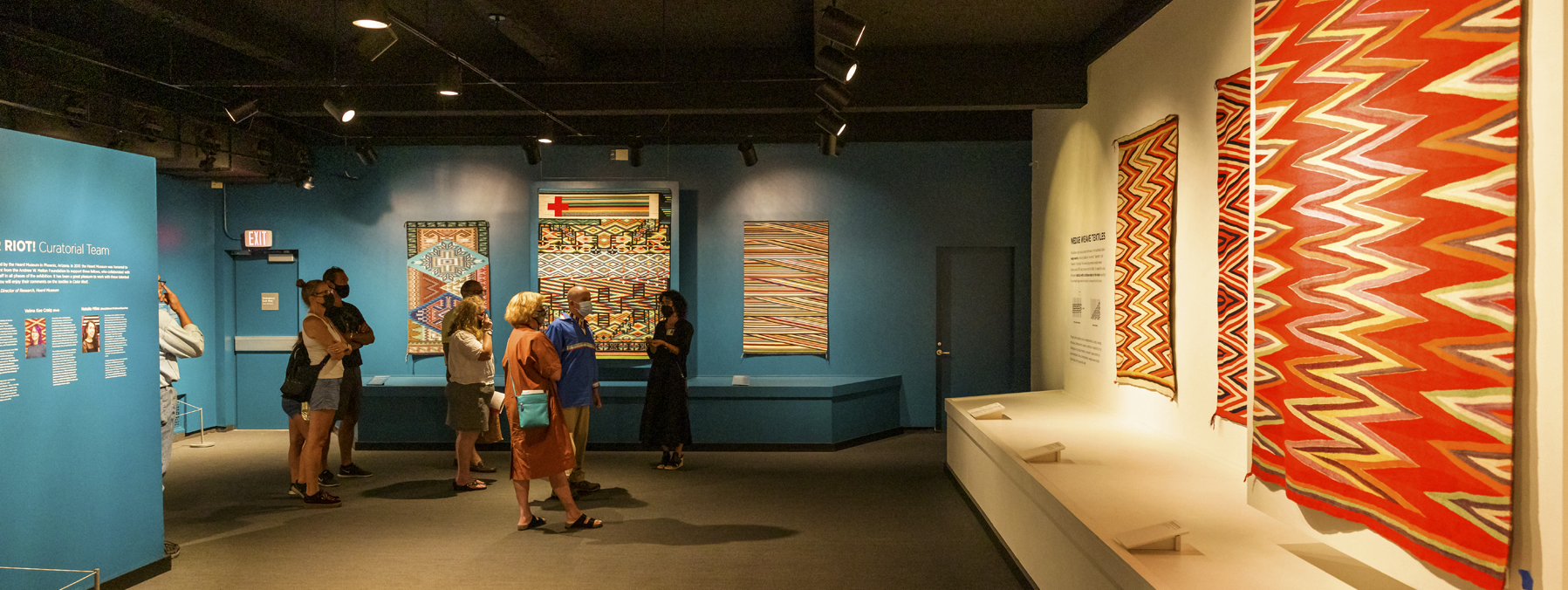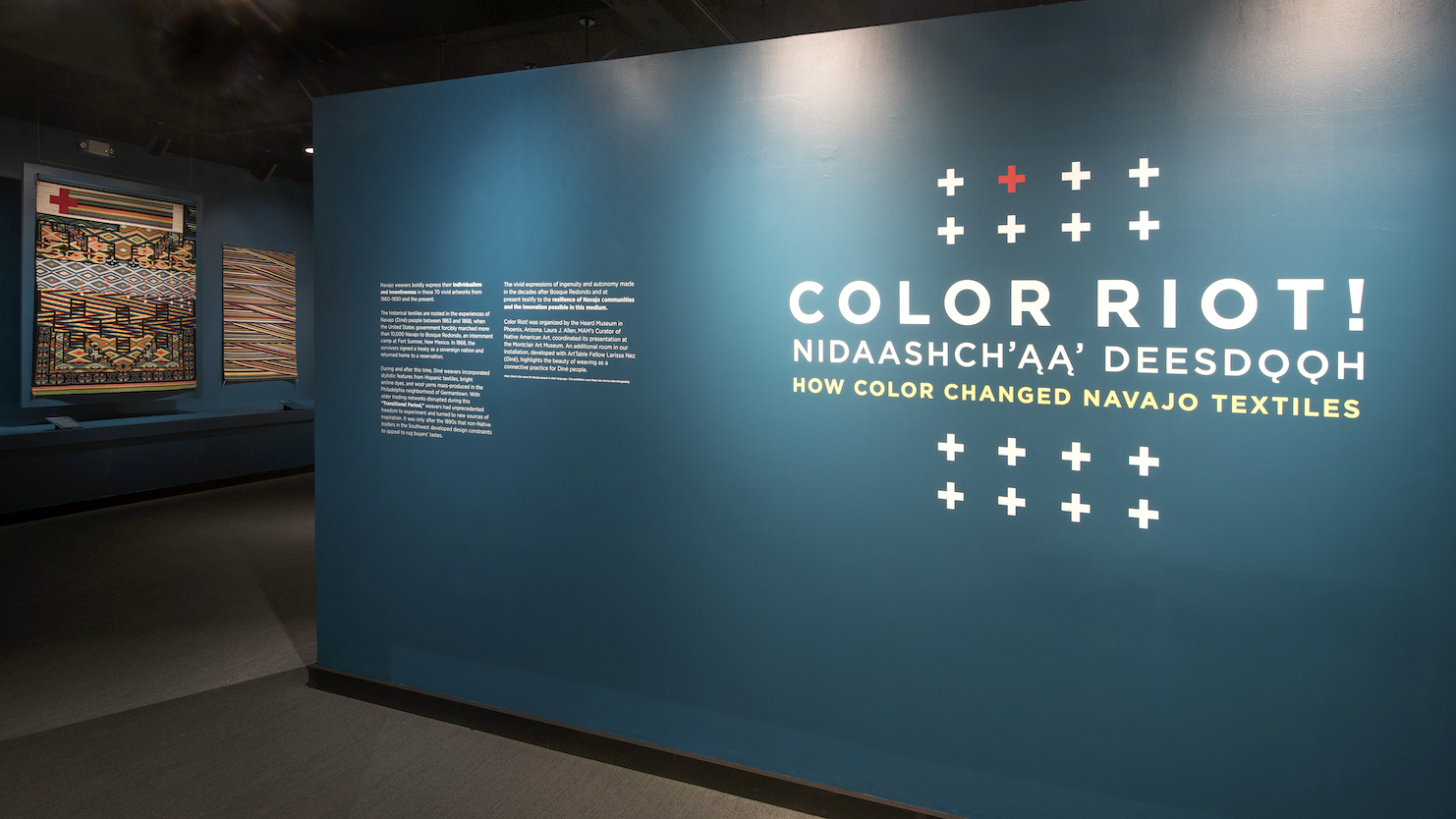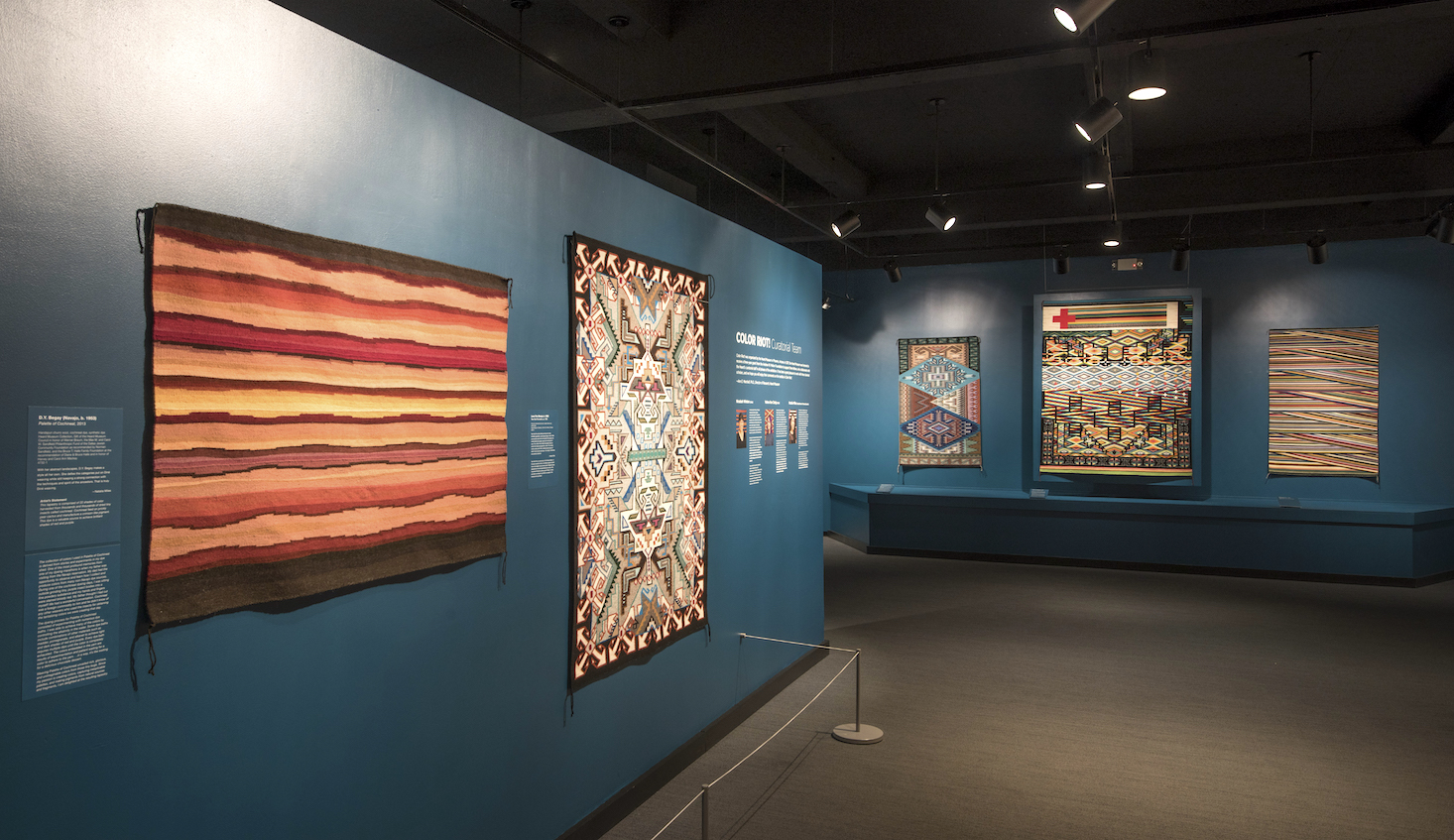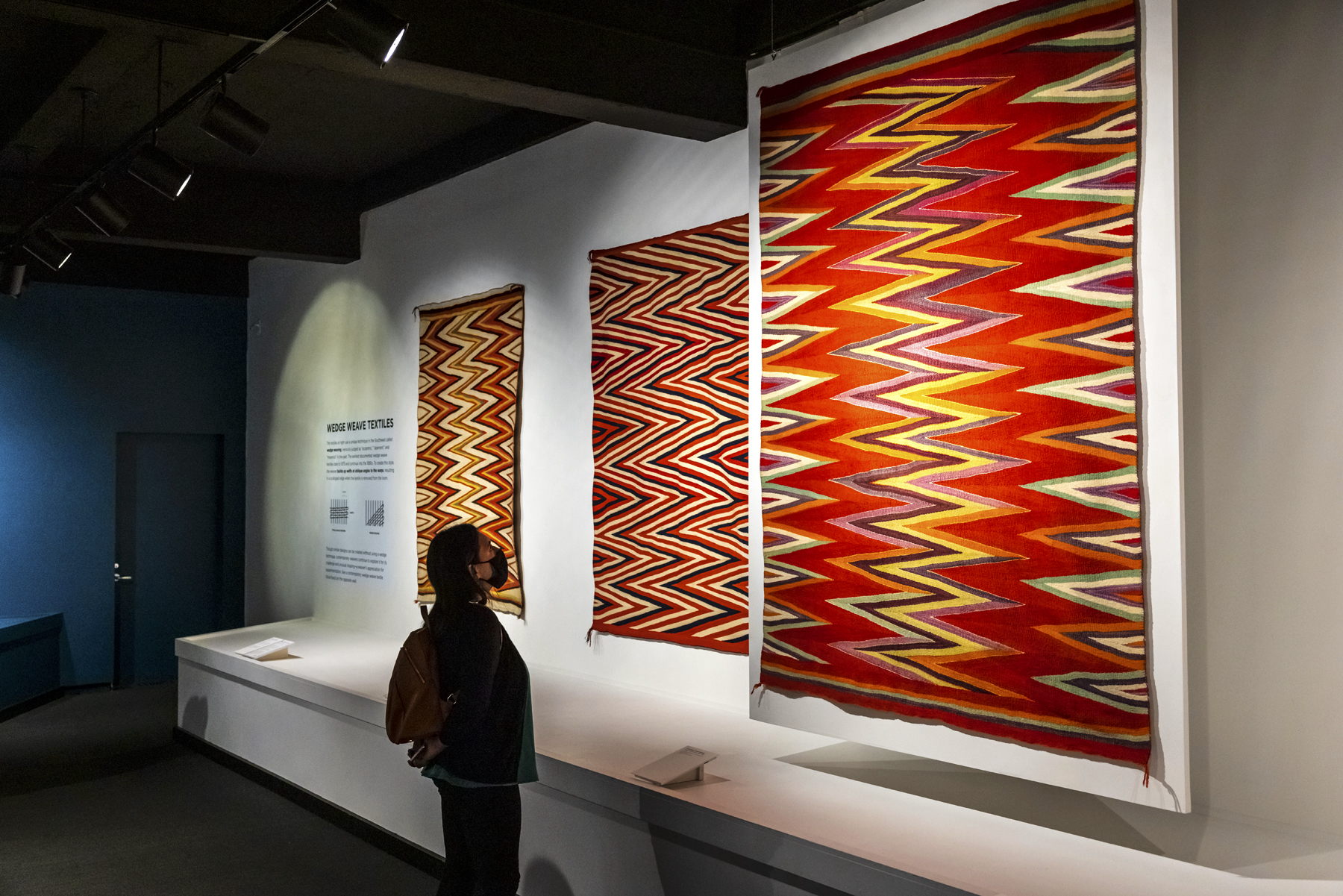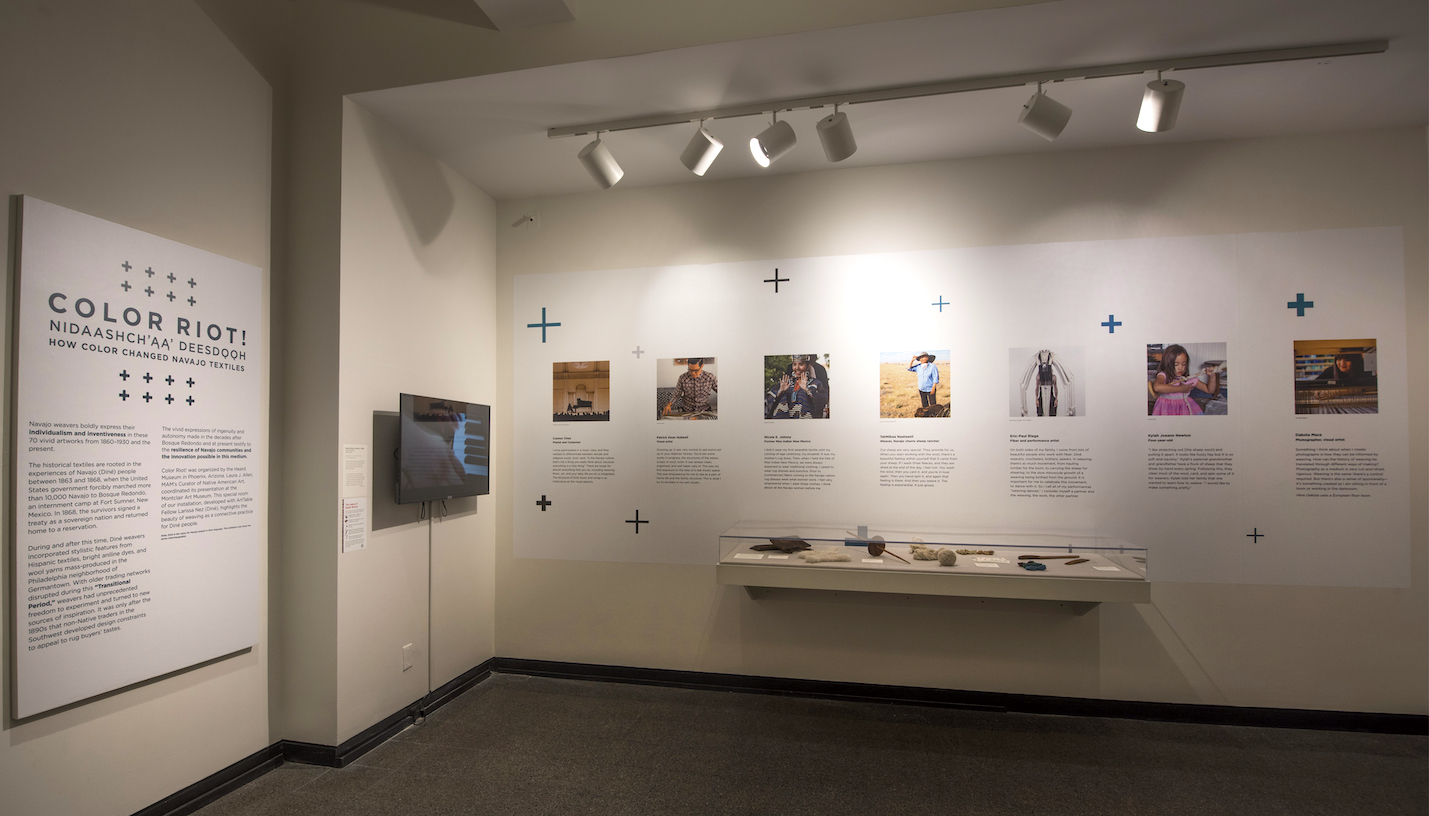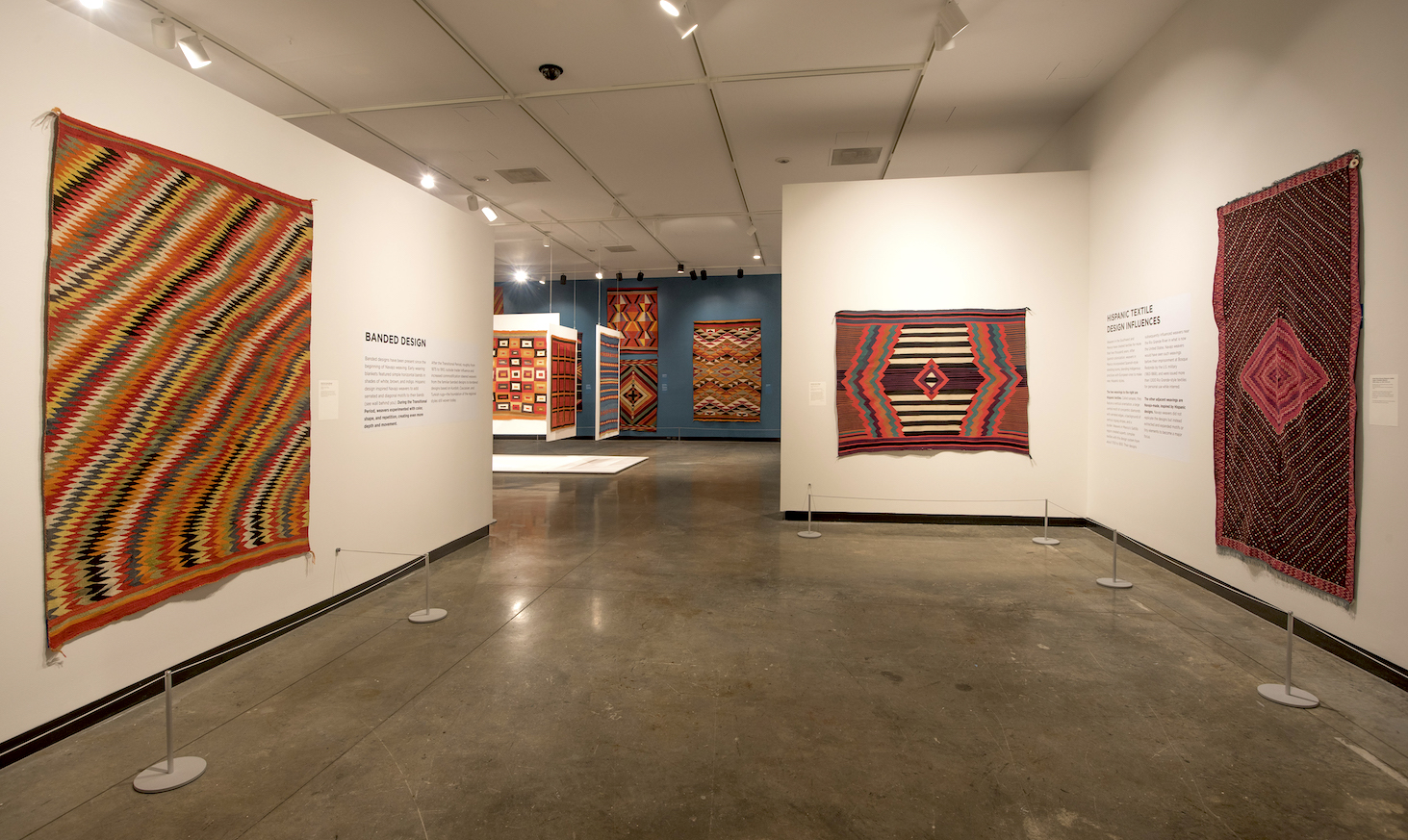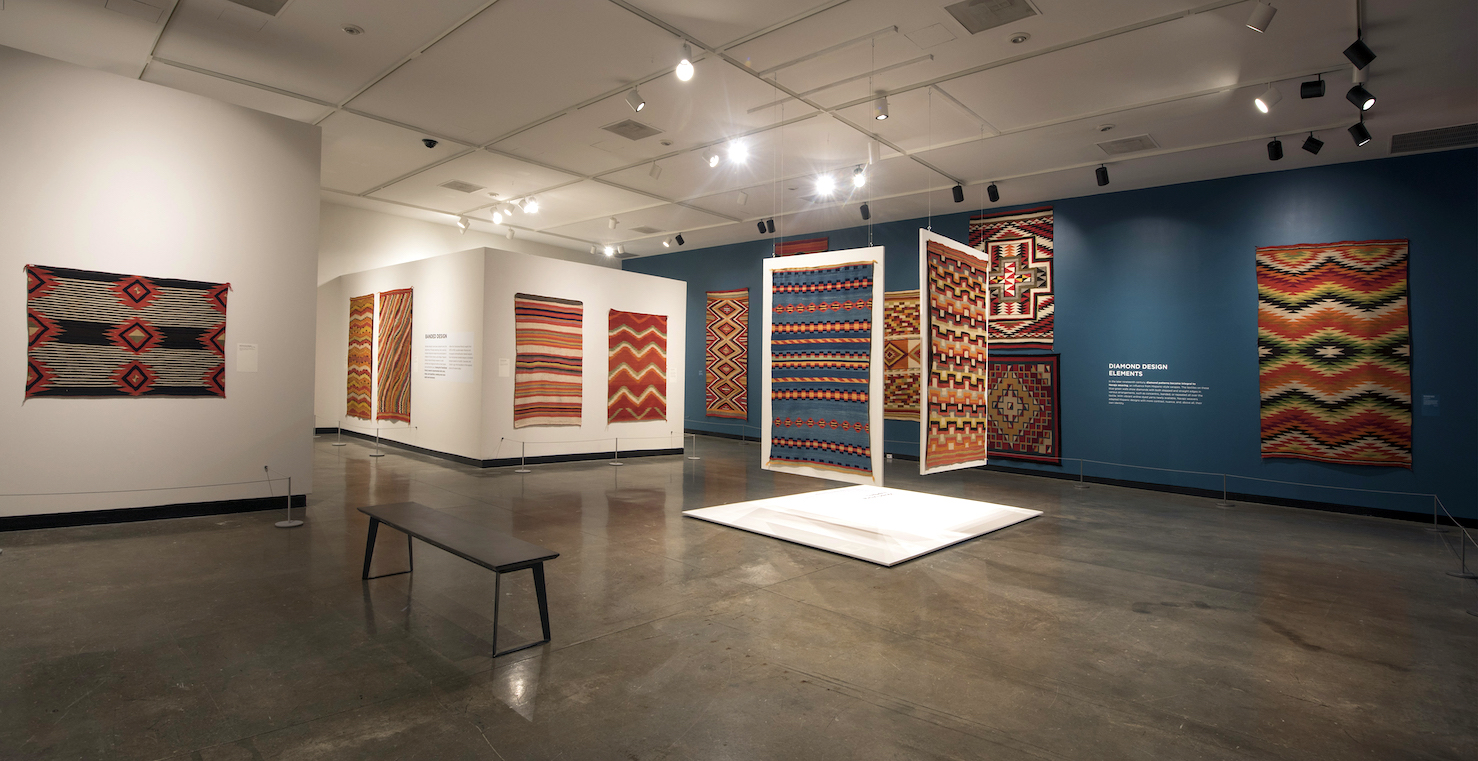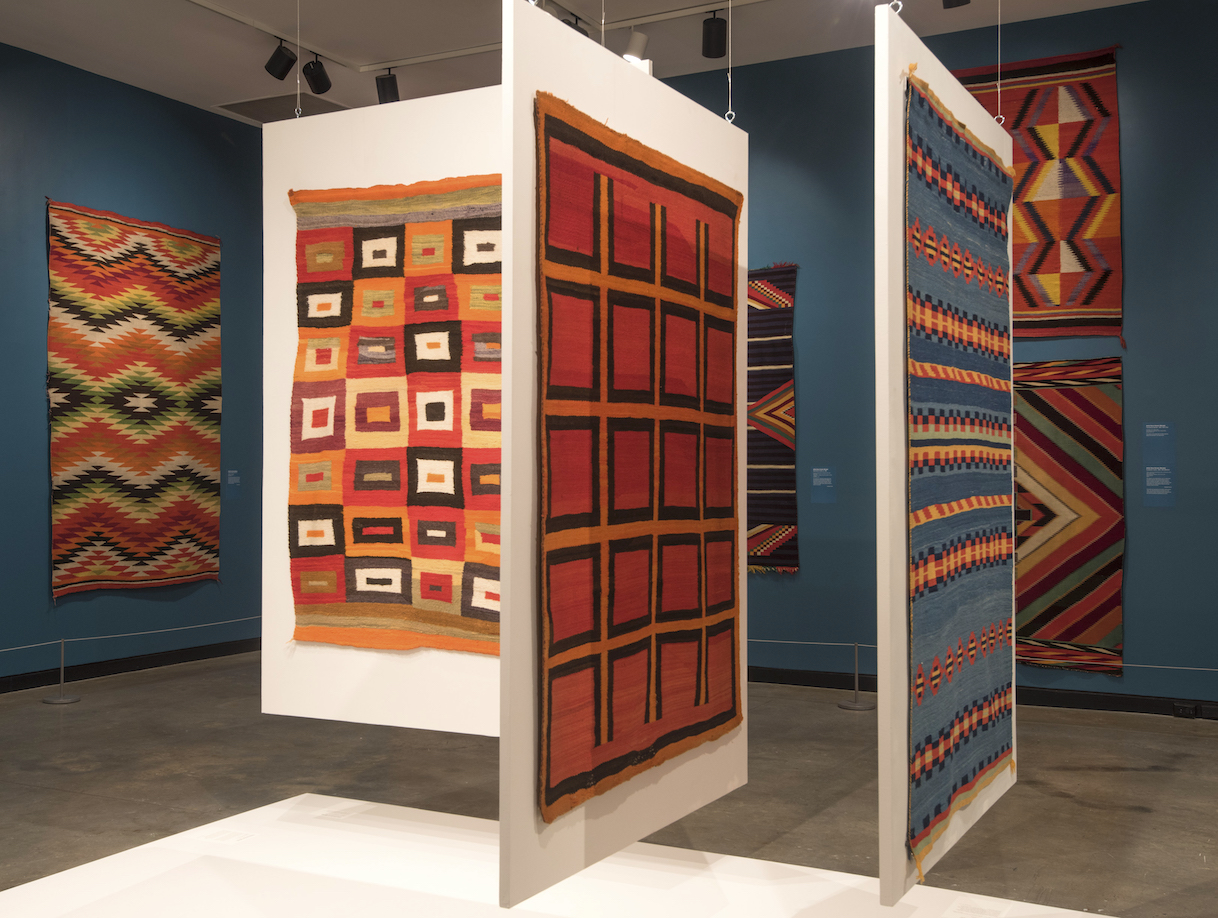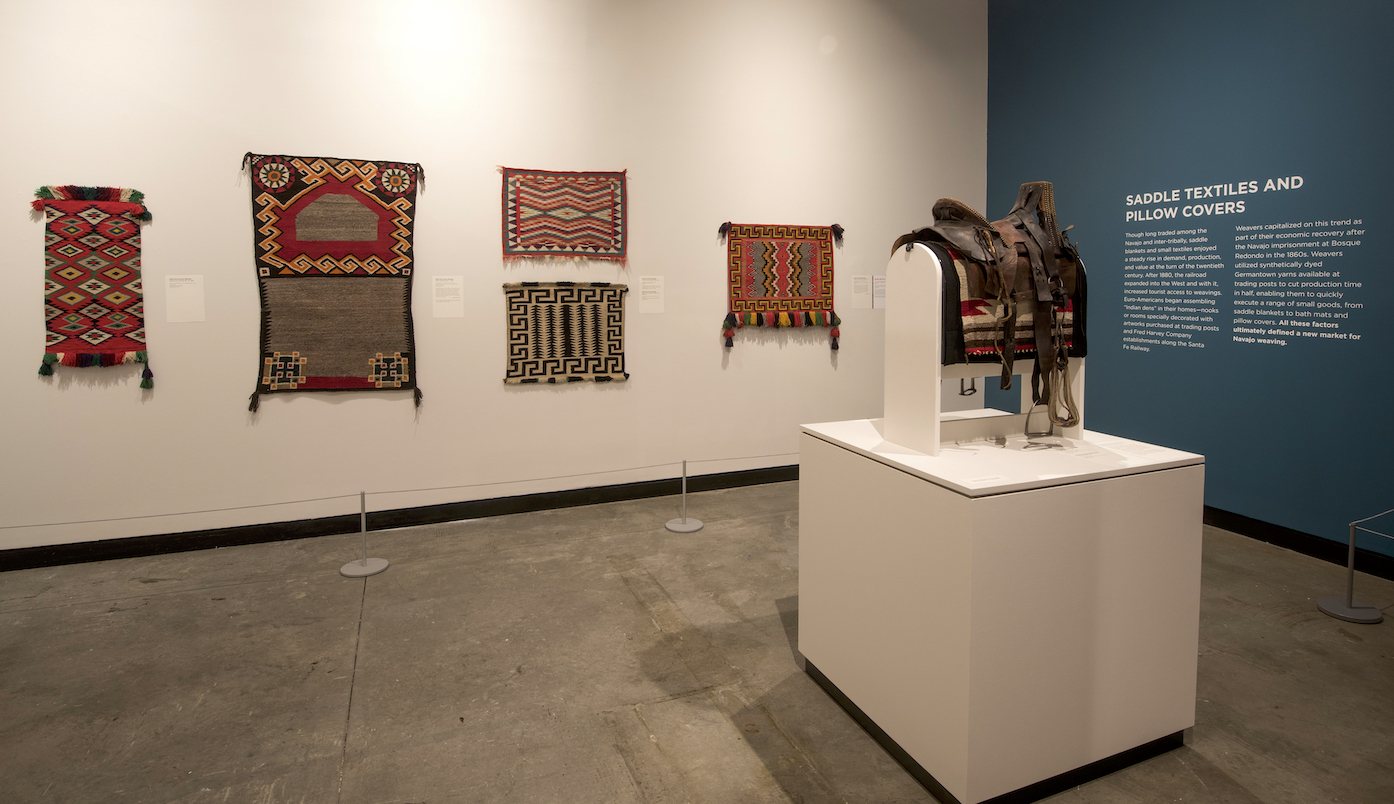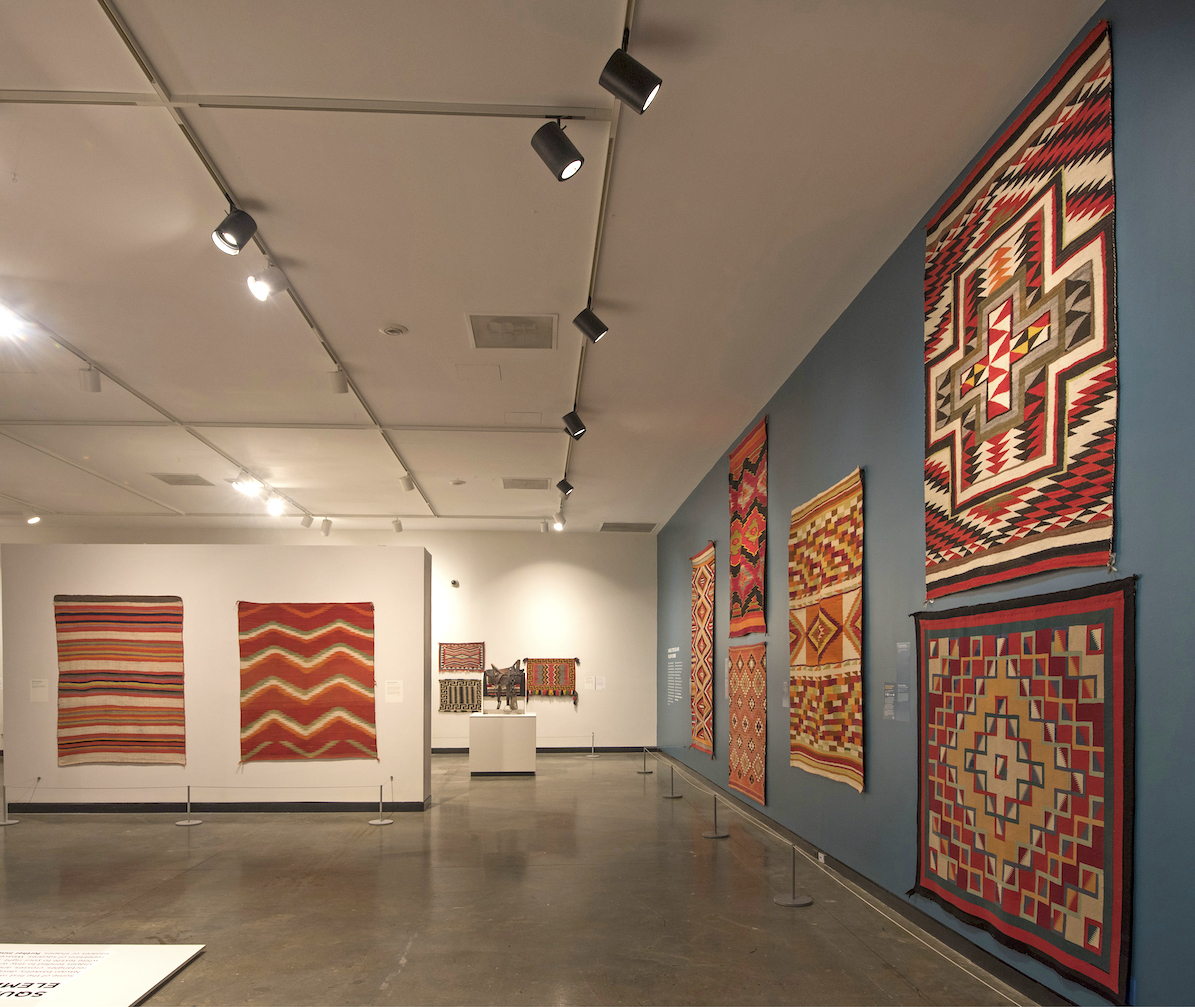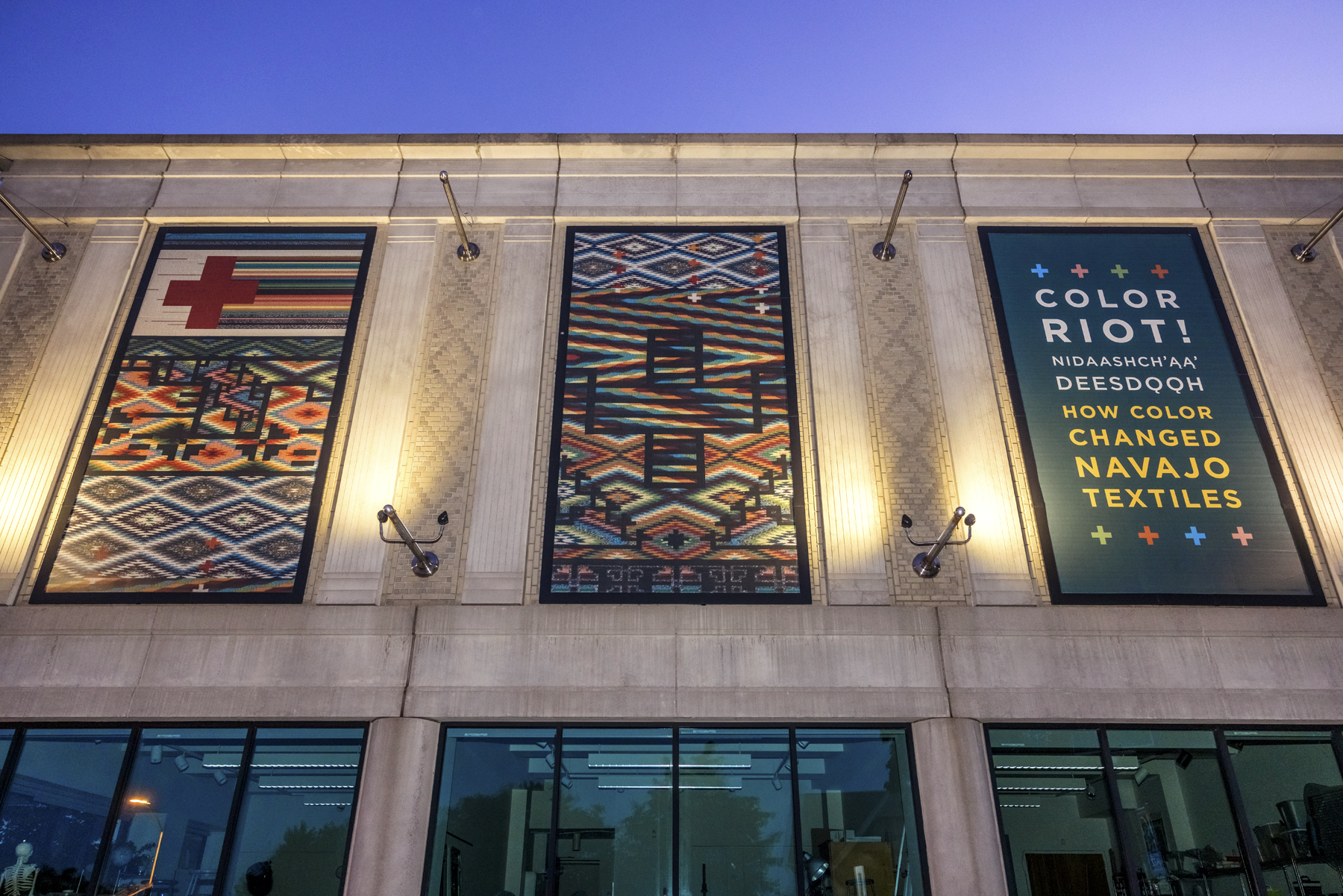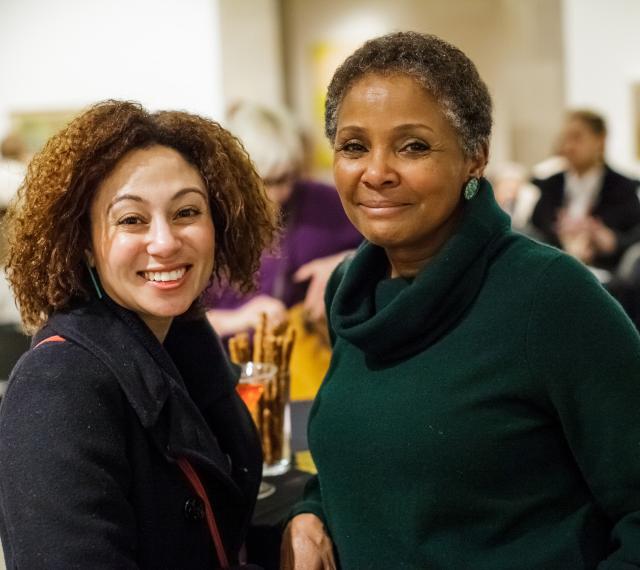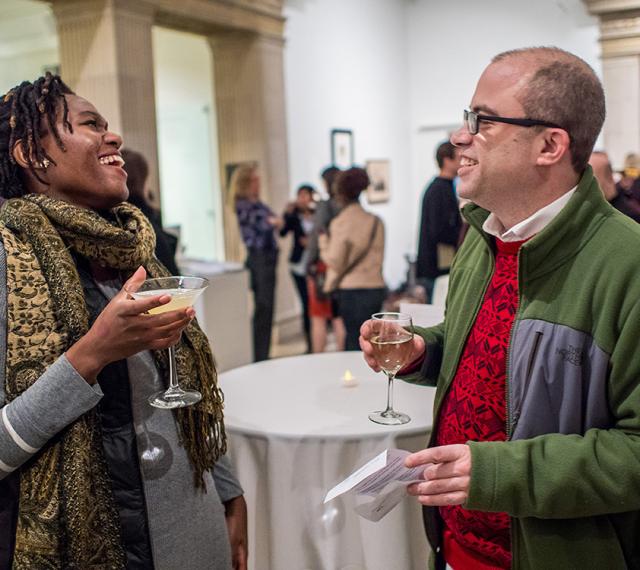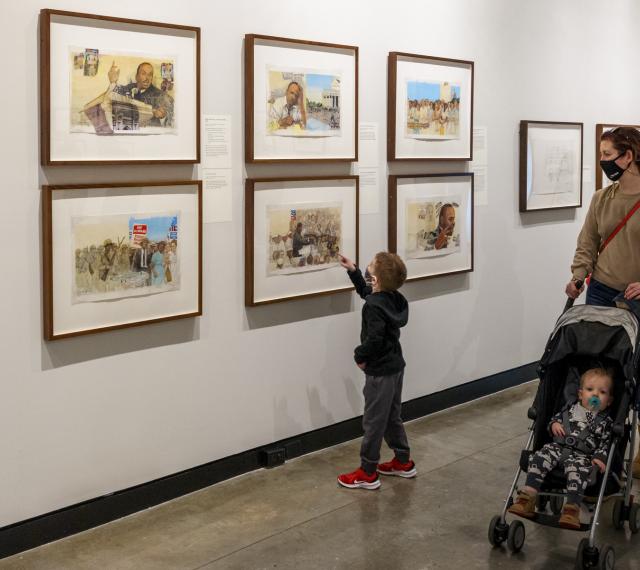Color Riot! was organized by the Heard Museum in Phoenix, Arizona. It was co-curated by three Andrew W. Mellon Fellows—Velma Kee Craig (Diné); Natalia Miles (Diné/Akimel O’Otham/Apache), and Ninabah Winton (Diné)—working with collector and textile specialist Carol Ann Mackay and Ann Marshall, the Heard’s Director of Research.
Laura J. Allen, MAM’s Curator of Native American Art, coordinated its presentation at the Montclair Art Museum. The additional room in our installation was developed with ArtTable Fellow Larissa Nez (Diné). The exhibition title graphics for Montclair Art Museum were designed by Victor Pascual (Diné/Maya).
“The textiles presented in this exhibition are creations of weavers who wove for themselves—they are vibrant and unrestrained in both color and design.”
—Co-curator Velma Kee Craig (Diné)
Change has always been a hallmark of Navajo (Diné) textile design, with weavers’ individualism a running thread. With Diné perspectives and the technical mastery of weavers at the heart of Color Riot!, this exhibition — featuring 70 bold artworks from 1860–1930 and the present — celebrates the courage and vision to experiment.
The exhibition at Montclair Art Museum leads with works from nine highly regarded contemporary weavers, including well-established artists such as D.Y. Begay and Marilou Schultz as well as those of a newer generation, including Melissa Cody and Venancio Francis Aragon. A unique component of Montclair Art Museum’s installation features reflections on weaving by Diné artists and culture-bearers such as Eric-Paul Riege and TahNibaa Naataanii, along with tools and materials from the Montclair Art Museum collection and immersive music by Connor Chee (Diné).
The historical textiles are rooted in the experiences of Navajo people between 1863 and 1868, when the United States government forcibly marched more than 10,000 Navajo to Bosque Redondo, an internment camp at Fort Sumner, New Mexico. In 1868, the survivors signed a treaty as a sovereign nation and returned home to a reservation.
During and after this time, Navajo weavers incorporated stylistic features from Hispanic textiles, bright aniline dyes, and wool yarns mass-produced in the Philadelphia neighborhood of Germantown. With older trading networks disrupted, weavers had unprecedented freedom to experiment and turned to new sources of inspiration. It was only after the 1890s that non-Native traders in the Southwest developed design constraints to appeal to rug buyers’ tastes. The vivid expressions of ingenuity and autonomy made in the decades after Bosque Redondo and at present testify to the resilience of Navajo communities and the innovation possible in this medium.

